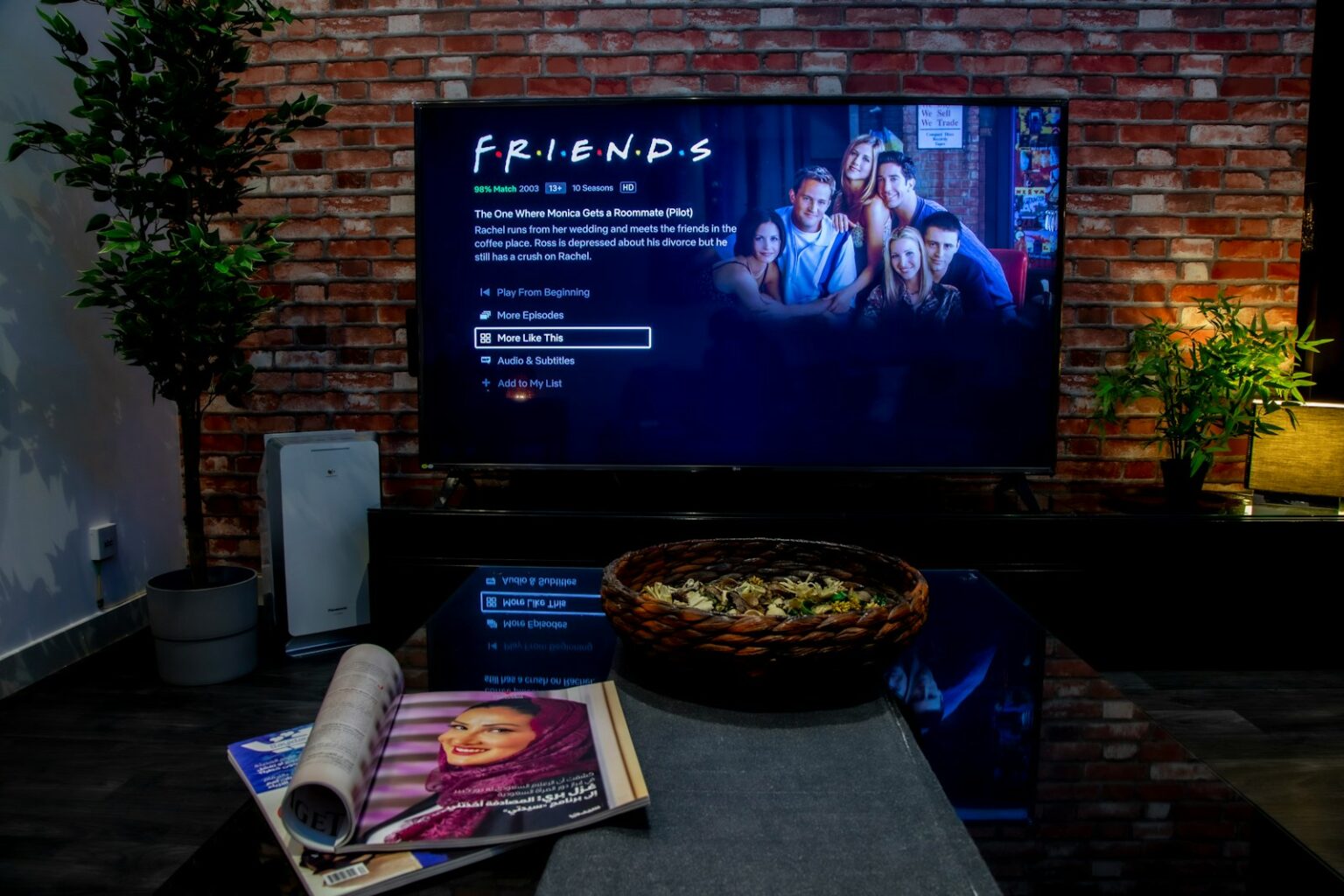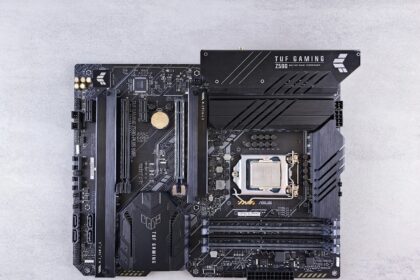Shopping for new tvs can feel like decoding a catalog of acronyms and bold claims. This guide sets clear expectations so you can pick the right screen for your room, budget, and viewing habits.
At the core, one major difference is how a panel makes light. OLED uses self-lit pixels for true blacks and deep contrast, while most other modern displays rely on an LED backlight. Brands like Samsung, LG, and Sony pair quantum dots or NanoCell filters with mini-LED arrays to boost brightness and control blooming.
We’ll compare real-world factors that shape picture quality: brightness, contrast, reflections, off-axis viewing, motion, HDR highlights, and uniformity. Expect model-level context too, from LG’s C-Series and its QNED line to Samsung’s high-end QLED sets and value mini-LED offerings from TCL and Hisense.
Read on for a practical, side-by-side look that cuts through marketing terms so you leave confident about which technology matches your space and priorities.
Quick take: the core differences at a glance
How a display produces light changes contrast, color, and how it behaves in bright rooms. That simple shift explains why some sets deliver inky blacks while others blast peak brightness for sunny living spaces.
Self-lit panels give pixels full control, yielding near-infinite contrast and uniform dark scenes without halos. By contrast, many LCD designs rely on a powerful backlight plus filters to reach higher brightness and vivid color.
- Picture priorities: dark-room viewers often prefer deep blacks and wide off-axis performance for group seating.
- Rooms with glare or lots of daytime viewing benefit from high-nit LCD variants with quantum dot enhancements for strong HDR highlights.
- Some LCD-based tvs use mini-LED zoning to cut blooming, narrowing the gap on shadow handling.
| Trait | Self‑lit panels | LCD with quantum tech |
|---|---|---|
| Contrast / blacks | Inky, uniform blacks; superior contrast | Good, but uses zones; possible halos |
| Brightness | Improved in recent models; usually lower peak nits | Higher peak brightness; strong HDR highlights |
| Viewing angles | Wide, consistent colors at off-center angles | Colors may wash out as angles change |
Display tech fundamentals: emissive vs. transmissive and why it matters
How a display handles light at the pixel scale defines its strengths and limits. This affects contrast, color accuracy, and how a set looks from different seats in your room.
Self-emissive panels and near-perfect blacks
Emissive designs build light into each pixel. When a pixel is off, it shows true black. That design gives superior contrast in dark scenes and keeps shadow detail clean.
Micro-scale inorganic LEDs reach very high brightness without organic wear. Both approaches keep color consistent off-axis for better group viewing.
Transmissive LCD TVs and the role of the LED backlight
Transmissive lcd sets use an LED backlight that shines through a liquid crystal layer and color filters. Local dimming zones try to mimic per-pixel control, while quantum dots or NanoCell layers boost color.
Mini-LED backlights improve precision by packing many smaller leds into more zones, reducing bloom and raising peak light output for bright rooms.
- Emissive: perfect blacks, wide viewing, true pixel-level control.
- Transmissive: higher peak brightness, strong HDR highlights, dependent on led backlight design.
| Architecture | How light is made | Strength | Typical trade-off |
|---|---|---|---|
| Emissive (OLED, MicroLED) | Each pixel emits its own light | Inky blacks, consistent off-axis color | Generally lower peak nits (OLED) or high cost (MicroLED) |
| Transmissive LCD (LED, QLED) | LED backlight through liquid crystals | High brightness, strong HDR highlights | Possible blooming, angle-dependent color |
| Mini-LED enhanced LCD | Denser LED zones for local dimming | Better highlight control, less bloom | Not true per-pixel dimming |
OLED explained: organic light-emitting diode for perfect contrast
When pixels make their own light, contrast and shadow detail take on a new level of depth. Self-lit pixels switch off completely to render true black next to bright highlights, which gives images a striking sense of dimensionality.
How independent pixels deliver infinite contrast
Each pixel can turn on or off independently, so blacks stay uniform across a scene. That eliminates haloing around bright objects and preserves fine detail in dark areas.
Brightness, HDR, and recent peak-nit gains
Historically, peak brightness trailed some LED panels. Newer designs and QD-enhanced versions push higher nits, so HDR highlights pop while keeping deep contrast.
Viewing angles, reflections, and burn-in precautions
Viewing angles remain wide; color and contrast hold up off-center better than many layered screens. Many panels use glossy coatings that can reflect lamps and windows, so room placement matters.
- Excellent picture performance for movies and prestige content.
- Great gaming response thanks to fast pixel switching and low input lag.
- Built-in safeguards reduce burn-in risk for typical mixed content.
| Trait | Strength | Consideration |
|---|---|---|
| Black levels | True blacks, high contrast | Reflections in bright rooms |
| HDR | Accurate highlights, strong impact | Lower peak nits vs brightest LCDs (improving) |
| Viewing angles | Wide, consistent color | Glossy screens can mirror lights |
QLED unpacked: quantum dots on LED/LCD for color and brightness
Quantum dots are tiny nanocrystals excited by blue light that emit very precise red and green wavelengths. That layer usually sits just in front of the liquid crystal, where it boosts color saturation and expands gamut without changing core LCD mechanics.
Quantum dots, additive color, and wide color gamut performance
More light means richer color. Because additive color benefits from luminance, these displays often reach higher brightness than many panels. That helps HDR highlights pop while preserving strong color volume in daytime rooms.
Mini-LED backlights, local dimming, and blooming control in bright rooms
Many premium models pair a denser mini -led backlight with local dimming. More zones give tighter control over bright spots, cutting halos around small highlights.
- Retains LCD architecture but adds a quantum dot film for truer reds and greens.
- High peak brightness improves HDR impact in sunlit living areas.
- Mini backlight zoning reduces bloom, though dark scenes may still show light spill compared with emissive screens.
| Feature | How it works | Benefit |
|---|---|---|
| Quantum dots | Nanocrystals convert blue light to precise red/green | Richer color, wider gamut, strong color volume |
| High-power backlight | Bright LEDs behind the panel | Very high peak brightness for HDR in bright rooms |
| Mini -LED local dimming | Many small zones control light spill | Improved contrast and less blooming around highlights |
QNED decoded: LG’s Quantum Dot + NanoCell + Mini-LED approach
LG’s hybrid formula layers quantum dots over a NanoCell filter and pairs them with a dense mini -led led backlight. This keeps the base lcd architecture but improves color purity and local dimming control.
How NanoCell filters and mini-LEDs refine color and contrast
The NanoCell layer absorbs unwanted wavelengths that can muddy reds and greens. That lets the quantum dots produce cleaner hues without boosting saturation artificially.
Underneath, many tiny LEDs create more local dimming zones. Tighter zone counts cut blooming and lift perceived black levels in mixed scenes.
QNED versus other panel types in practice
Because it still uses a backlight, this family cannot match per-pixel shutoff for absolute black. Yet it aims for higher peak light output and lower risk of image retention than an emitting diode-based screen.
Compared with other quantum-dot LCDs, LG leans on NanoCell filtering and its processing to tune contrast and reduce stray light. Real-world results vary by series: zone count, panel quality, and firmware shape final performance.
- Strength: bright highlights, strong color volume for daytime viewing.
- Consideration: still subject to zone-based blooming in deep shadow areas.
- Good fit: households that want vivid daytime tvs without OLED-style retention concerns.
| Feature | What it does | Practical effect |
|---|---|---|
| Quantum dots + NanoCell | Refines emitted wavelengths | Cleaner color, less spill |
| Mini -LED led backlight | Many small zones | Tighter dimming, reduced haloing |
| LCD base | Backlight-driven image | Higher peak nits, not per-pixel blacks |
QNED vs. OLED vs. QLED: What Is the Difference and Which Is Best?
Contrast often comes down to whether pixels can switch off individually or must rely on grouped light zones.
Contrast and black levels
Self-lit pixels deliver the deepest blacks and the cleanest shadow detail. This matters in night scenes, where local dimming zones in many lcd tvs can reveal halos around subtitles or stars.
Brightness and HDR impact
Quantum-dot equipped sets push higher peak nits for punchy HDR highlights. That makes bright rooms and sunlit viewing more satisfying while keeping highlights vivid.
Viewing angles, blooming, and uniformity
Off-center viewing angles favor self-emissive panels, which hold color and depth better. Many LCD designs lose saturation at an angle and can show uniformity quirks under certain light.
Picture quality over time
LCD-based models offer stable long-term performance with no practical risk of permanent retention. Modern self-lit panels have improved safeguards, but mixed content and sensible settings still help preserve picture quality over time.
- For pure contrast: per-pixel control wins for deep blacks and subtle shadow detail.
- For bright rooms: high peak brightness from quantum dots and mini backlights gives a clearer HDR punch.
- For gaming: check HDMI 2.1, VRR, and low input lag—features vary across models and years.
| Trait | Self-emissive panels | LCD + quantum/mini backlight |
|---|---|---|
| Black levels / contrast | True blacks, excellent shadow detail | Good with local dimming; may show halos |
| Brightness / HDR impact | Strong mid-range highlights; improving peak nits | Higher peak nits; punchy HDR in bright rooms |
| Viewing angles / uniformity | Wide angles, consistent color | May lose saturation off-center; uniformity varies |
| Picture longevity | Improved mitigation for retention; reasonable care advised | Consistent long-term picture, no retention risk |
Best for your use case: movies, sports, gaming, and bright rooms
Match the display’s strengths to your routine—late-night movies, bright living rooms, or fast-paced gaming.
Home theater and nighttime viewing
For dark rooms, an emissive panel leads. It gives true blacks, deep contrast, and stable color at off-center seats. That makes films pop and preserves shadow detail.
Daytime and sunlit spaces
High-bright displays with anti-reflective coatings hold up in daylight. Mini-LED backlights improve HDR highlights and cut blooming, so sports and daytime shows stay readable.
Gaming features and responsiveness
Look for HDMI 2.1, low input lag, and VRR support for smooth frame pacing. Many recent flagships deliver 4K/120, fast panel response, and variable refresh for better gaming performance.
- Home theater: contrast and off-angle viewing matter most.
- Bright rooms: peak brightness and anti-glare treatments win.
- Gaming: prioritize HDMI 2.1, VRR, and low latency over panel type.
- Placement: glossy screens may mirror lamps; choose finishes to suit your seating and light.
| Use case | Key trait | Practical effect |
|---|---|---|
| Night viewing | True black | Immersive movie nights |
| Daylight | High brightness | Readable HDR, less glare |
| Sports | Uniform brightness | Clear action, fewer reflections |
| Gaming | Low lag + VRR | Smoother, responsive play |
Models, pricing, and availability in the United States
U.S. shoppers can expect clear lineup tiers and steady availability across major retailers. Premium flagships sit beside value models, and promotions often shift prices by size and series.
What to expect by budget tier:
Premium and flagship
Top-tier sets include LG’s C‑Series, Samsung’s QD‑OLED S95C/S90C, and Sony’s A95K. These models target cinephiles who prize deep blacks, wide color, and high-end processing.
High-end QLED and mini -LED
Samsung’s QN90D and many mini -LED lcd tvs fall here. These deliver very high peak brightness and strong HDR impact. Brands like Hisense (U8K) and TCL offer value-packed mini options with competitive performance.
Midrange and value
LG’s qned tvs span several tiers; performance improves with more dimming zones and smarter processing. Midprice lcd tvs from TCL and Hisense give solid brightness and color for everyday viewing.
When comparing models, check zone counts, HDMI 2.1 ports, anti-reflective coatings, and whether a set uses a dense led backlight or basic -led array. Availability is broad across U.S. retailers, but mini -LED systems and wide‑gamut quantum dots typically carry a price premium.
| Model example | Tier | Strength | Price cue (U.S.) |
|---|---|---|---|
| LG C‑Series | Premium | Deep blacks, strong color | High; frequent sale reductions |
| Samsung QN90D | High-end | Very high brightness, tight local dimming | Premium; mini -LED premium |
| Hisense U8K / TCL mini‑LED | Value / Mid | Great brightness-to-price ratio | Midrange; strong value |
| LG qned tvs (various) | Entry to Mid-Premium | Scaled performance by zone count | Range from affordable to mid-premium |
Conclusion
strong, Pick a screen by matching how it performs in your room with your viewing routine. That approach highlights the key difference in architecture: one path uses emissive pixels for deep contrast, while the other relies on an LED backlight and quantum layers for sheer brightness.
For a light‑controlled home theater, trade‑offs favor true black levels and cinematic quality. In bright rooms, well‑tuned mini‑LED LCD sets bring lively highlights and resilience to glare. Zone count, coatings, and processing shape real results more than labels do.
Across budgets in the United States, choose the display that fits your seating, room light, and habits. Over time, any of these technology families can deliver superb viewing when matched to how you use your tvs.
FAQ
How do self-emissive panels differ from LCD-based displays?
Self-emissive panels, like OLED and MicroLED, light each pixel individually, so blacks are truly black and contrast appears infinite. LCD-based displays use a separate LED backlight that shines through an LCD layer; backlight control determines blacks and can cause blooming around bright objects.
Why do OLED screens often look better in dark rooms?
Because each pixel can turn off completely, OLED yields deep blacks and exceptional shadow detail with no backlight glow. That makes movies and night scenes pop more, improving perceived contrast in dim viewing conditions.
What role do quantum dots play in color and brightness?
Quantum dots boost color accuracy and saturation by converting backlight wavelengths into very pure colors. When paired with a strong LED or mini‑LED backlight, they enable brighter highlights and a wider color gamut for HDR content.
How does mini‑LED change LCD TV performance?
Mini‑LED uses many smaller LEDs for the backlight, allowing tighter local dimming zones. That reduces blooming, improves contrast, and raises peak brightness compared with traditional full‑array backlights, especially in HDR scenes.
Is burn‑in still a concern with modern OLED TVs?
Burn‑in risk exists but is lower with today’s OLEDs thanks to pixel shifting, screen savers, and usage safeguards. For typical mixed viewing (movies, sports, gaming) most users won’t see issues, though heavy static UI use can increase risk over years.
Which panel type is best for bright, sunlit rooms?
High‑brightness LCDs with quantum dots and mini‑LED backlights perform best in bright rooms. They deliver strong peak nits and resist reflections, making highlights and sports clearer in daylight compared with most OLEDs.
How do viewing angles compare across these technologies?
OLED offers the widest, most consistent viewing angles with little color or contrast shift off‑axis. LCD variants improve with IPS-type panels, but many high‑brightness QLED and QNED sets still lose contrast and color when viewed from the side.
What should gamers look for when choosing between these TVs?
Prioritize low input lag, fast pixel response, and HDMI 2.1 features like 4K@120Hz and VRR. OLED panels often have superb response times, while mini‑LED LCDs can match lag and deliver higher sustained brightness for HDR gaming.
How do brightness and HDR performance differ between technologies?
LCDs with quantum dots and mini‑LED backlights can reach higher peak nits, making specular highlights brighter in HDR. OLEDs excel at shadow detail and contrast, so HDR scenes with deep blacks can look more natural despite lower peak brightness.
Are there meaningful lifespan differences between OLED and LED‑based TVs?
LED‑backlit LCDs generally have very long lifespans without burn‑in risk. OLED panels can dim slightly over many years and carry a small burn‑in risk, but modern models are built to last for typical consumer lifetimes when used responsibly.
What is blooming and which TVs handle it best?
Blooming occurs when bright zones bleed into dark areas because backlight zones are too large. Mini‑LED with many zones reduces blooming, while OLED avoids it entirely thanks to per‑pixel illumination.
How do manufacturers position QNED compared to QLED and OLED?
QNED combines quantum dots, NanoCell filtering, and mini‑LED backlights to target improved color and contrast in LCD designs. It aims to rival QLED’s brightness benefits while narrowing the gap to OLED’s contrast using dense local dimming.
Which display type gives the best value across budgets?
For tight budgets, mainstream LED LCDs with quantum dots give strong brightness and color at lower cost. Midrange buyers benefit from mini‑LED models for better contrast. Enthusiasts who value inky blacks often choose OLED despite higher price.
Do reflections and screen coatings differ between these panels?
Yes. High‑end models of any technology add better anti‑glare coatings. OLEDs can still reflect ambient light, but many OLED and premium LCD sets use treatments to reduce glare; choose based on room lighting and placement.
How should I match a TV to my primary content—movies, sports, or gaming?
For home theater and movie nights, prioritize contrast and blacks—OLED is strong here. For sports and bright rooms, choose a high‑brightness quantum‑dot mini‑LED model. For competitive gaming, look for low lag, high refresh, and HDMI 2.1 support regardless of panel type.























